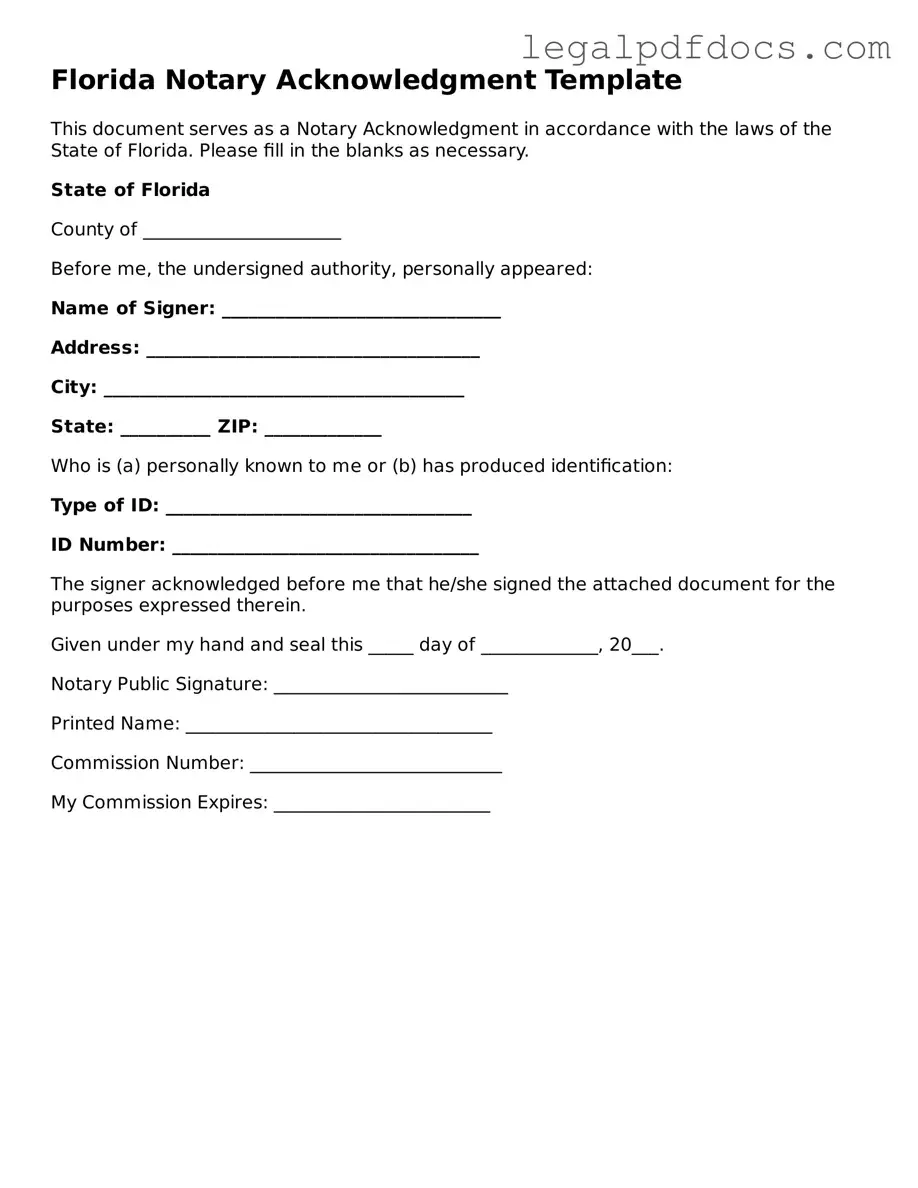In the state of Florida, the Notary Acknowledgement form plays a crucial role in ensuring the authenticity and integrity of various legal documents. This form serves as a formal declaration by a notary public, confirming that the individual signing the document has done so willingly and is indeed who they claim to be. It is commonly used in a variety of situations, such as real estate transactions, legal agreements, and other official paperwork where verification is essential. The form typically includes essential details such as the name of the signer, the date of the acknowledgment, and the notary’s signature and seal. By providing a reliable means of identification and consent, the Notary Acknowledgement form helps protect all parties involved and adds a layer of trust to the transaction. Understanding its components and proper usage is vital for anyone navigating the legal landscape in Florida.
